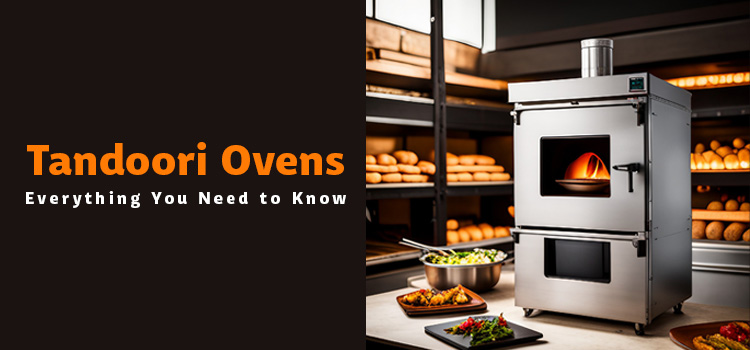As an Amazon Associate, I earn from qualifying purchases
Unveiling the Mysteries of Traditional Cooking: What Is a Tandoori Oven

In the realm of culinary arts, where tradition meets modern gastronomy, the tandoori oven stands as a testament to the rich culinary heritage of South Asia. This traditional cooking appliance is not just a tool but a portal to a world where flavors, aromas, and textures intertwine to create dishes that are as delightful to the palate as they are to the eyes. In this comprehensive guide, we will explore the depths of what constitutes a tandoori oven, its historical significance, and how it continues to influence contemporary cooking practices.
Understanding the Tandoori Oven
A tandoori oven, or simply ‘tandoor,’ is a cylindrical clay or metal oven used in cooking and baking. The concept of the tandoor is not new. It has its origins dating back over thousands of years in the ancient civilizations of the Indus Valley. Traditionally fueled by wood or charcoal, the tandoor cooks food at high temperatures of up to 900 degrees Fahrenheit (480 degrees Celsius). This intense heat cooks food quickly, sealing flavors and imparting a distinctive charred taste that has become synonymous with tandoori cuisine.
Anatomy of a Tandoori Oven
The tandoor is made up of three main components: the cylindrical cooking chamber, the fuel source, and the opening. The cooking chamber is usually lined with clay or metal, providing insulation and retaining heat. The fuel source, located at the bottom of the oven, provides constant heat to cook food evenly. Lastly, the opening, located at the top of the oven, allows for ventilation and temperature control.
Cooking Techniques with a Tandoori Oven
The tandoor is known for its versatility in cooking various types of food. The high heat allows for quick roasting and grilling of meats, vegetables, and flatbreads such as naan. However, what sets the tandoor apart is its ability to perform the art of ‘tandoori cooking.’ In this technique, marinated meats and vegetables are skewered and placed inside the tandoor, where they cook in their juices, giving them a tender texture and intense flavor.
Historical Significance of the Tandoori Oven
The tandoori oven has been an integral part of South Asian cuisine for centuries, with its roots tracing back to the Mughal Empire. It was during this time that tandoori cooking became increasingly popular among royalty and commoners alike. Since then, it has continued to evolve and spread across various regions of South Asia, with each culture adding its own unique touch to the tandoor.
Influence on Contemporary Cooking Practices
The influence of the tandoori oven on contemporary cooking practices stretches far beyond the borders of its South Asian origin. Today, tandoori cooking enjoys global popularity, weaving its traditional techniques into the fabric of international cuisine. Chefs around the world incorporate tandoori methods into their culinary repertoire, experimenting with a variety of ingredients to create dishes that resonate with the rich flavor profile characteristic of tandoor-cooked food. Restaurants and eateries offer tandoori dishes that cater to the palate of a diverse clientele, indicating the oven’s significant impact on global culinary trends.
Furthermore, the tandoori oven has inspired modern kitchen appliances and cooking techniques that seek to mimic its high-temperature cooking environment. From specialized tandoori ovens designed for restaurant and home use to grill attachments that replicate the tandoor’s unique heat distribution, the essence of tandoori cooking is being integrated into kitchens worldwide. This blending of traditional and modern cooking practices underscores the timeless appeal of tandoori cuisine and its enduring influence on the culinary arts.
Key Components of a Tandoori Oven
The tandoori oven is characterized by its cylindrical shape, which allows for an even distribution of heat within its chamber. The inner walls of the oven are coated with a refractory clay mix, which not only withstands the high cooking temperatures but also contributes to the unique flavor of the dishes it prepares. The oven is usually installed in a pit or raised above ground to manage its intense heat better.
Traditional Uses and Modern Adaptations
Originally, the tandoor was used to bake flatbreads like naan and roti. However, over time, its use has expanded to include roasting and grilling a variety of meats, seafood, and vegetables, making it a versatile tool in both traditional and modern kitchens.
One of the most iconic dishes associated with the tandoori oven is Tandoori Chicken. This dish epitomizes the tandoor’s ability to create smoky, succulent meats that are marinated in spices and yogurt, achieving a perfect balance of flavor and texture that has captivated food enthusiasts around the globe.
A Fusion of Flavors
The adaptability of the tandoori oven has allowed it to seamlessly blend into various culinary traditions, influencing a genre of fusion cuisines that combine elements from different cultures. From tandoori pizza to tandoori tofu, the possibilities are endless, showcasing the oven’s potential to transcend traditional boundaries and innovate within the gastronomic world.
The Role of Tandoori Ovens in Contemporary Cooking
The evolution of the tandoor from a traditional cooking apparatus to a modern kitchen staple highlights its enduring relevance. Today, tandoori ovens are not only found in restaurants specializing in South Asian cuisine but have also made their way into the kitchens of culinary aficionados seeking to explore the art of traditional cooking methods.
Health Benefits
Apart from its culinary significance, the tandoori oven is lauded for its health benefits. Cooking in a tandoor requires minimal use of oils or fats, resulting in dishes that are lower in calories yet rich in flavor. The high heat and quick cooking times preserve the nutrients in the food, making the tandoori oven a preferred choice for health-conscious individuals. Additionally, the use of clay or metal in the oven’s construction makes it an eco-friendly cooking option.
Integrating the Tandoori Oven into Your Culinary Arsenal
Incorporating a tandoori oven into your kitchen opens up a new dimension of culinary exploration. Whether you are a seasoned chef or an enthusiastic home cook, the tandoor offers a unique way to experiment with flavors, textures, and techniques.
For those interested in deepening their understanding of traditional and modern cooking appliances, exploring resources like Stoke Pizza Oven Reviews, Wolf Speed Oven Reviews, or Criterion Microwave Reviews can provide valuable insights into the latest trends and innovations in the culinary world. Additionally, for enthusiasts of gourmet popcorn, Best Microwave Kettle Corn might be of interest.
Conclusion
What is a tandoori oven, but a gateway to exploring the depths of culinary tradition and innovation? Its enduring relevance in both traditional and contemporary cuisines is a testament to the versatility and unique capabilities of this time-honored cooking appliance. By blending ancient cooking methods with modern culinary techniques, the tandoori oven continues to inspire chefs and food enthusiasts worldwide to explore new culinary landscapes, creating dishes that are not only a feast for the taste buds but also a rhapsody of cultural heritage and innovation.
As an Amazon Associate, I earn from qualifying purchases
